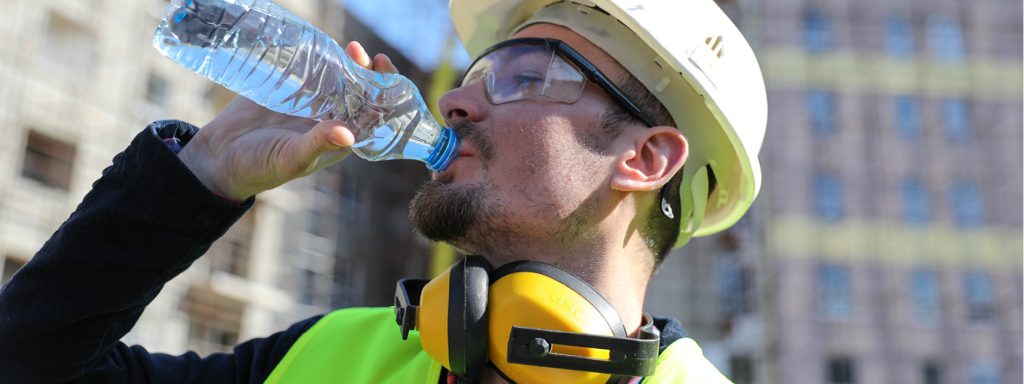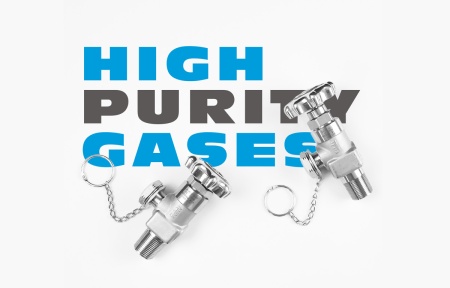By Paul Bernier, ASP
There are real dangers of heat stress in the workplace, and it can happen quickly to anyone working in hot, humid conditions. A worker may suffer cramps, dizzy or fainting spells, or even more serious issues such as heat stroke, or even death. According to the U.S. Bureau of Labor Statistics, an average of about 45 workers die each year from heat stress in the U.S.
Although there is not a specific federal standard addressing heat stress, employers are more aware than ever, looking to protect their workers from heat related illness while keeping them as productive as possible.
High temperatures, direct sunlight, heavy workloads, and high humidity all contribute to heat stress. Too much heat can also cause fatigue and irritation, thus increasing the chances of incidents, as well. Employers and supervisors are learning to become aware of symptoms so they can deal with heat stress to prevent accidents and maintain good health and overall wellbeing of their workers. Here are some very common signs:
Heat rash is an early signal of potential heat stress. It is commonly associated with hot, humid conditions in which skin and clothing remain damp due to unevaporated sweat. Heat rash may involve small areas of the skin or the entire torso.
Heat syncope is characterized by dizziness or fainting while standing still in the heat for an extended period. The most serious aspect of heat syncope is that it may cause people to fall or injure themselves while operating machinery or even at heights.
Heat cramp symptoms include painful cramps or spasms in the legs, arms, or abdomen. The worker will probably sweat very heavily. Spasms may occur during work or in the evening after work. Heat cramps are often caused by a temporary fluid and salt imbalance during hard physical work in hot environments.
Heat exhaustion results from the reduction of body water content or blood volume. The condition occurs when the amount of water lost as sweat exceeds the volume of water drunk during the heat exposure. A worker may have some or all of the signs or symptoms, which include heavy sweating, clammy, flushed, or pale skin, weakness, dizziness, nausea, rapid and shallow breathing, headache, vomiting, or fainting.
Heat stroke is a life-threatening, heat-related disorder associated with working under very hot and humid conditions. Heat stroke can result in coma or death. The early signs and symptoms of heat stroke include a high body temperature of 104½°F or higher, hot dry skin, absence of sweat, rapid heart rate, dizziness, shivering, nausea, severe headache, confusion, convulsions, and unconsciousness.
There are several ways to prevent heat exhaustion from happening. One very common way is acclimation to the heat environment. Safety professionals will use a step process to help with acclimatization, which will include shorter periods of work in the environment for a couple days, then gradually adding more time until the worker is acclimated. Another way is to provide safety products that aid in the prevention of heat related illnesses. Here are some great safety tools a worker can use:
Work Umbrella: this item can block the direct sun from the worker, keeping them much cooler, and many are even fire resistant for welding applications.
Hydration: although it seems very obvious that water is always required, some manufacturers have taken it further by adding flavors and electrolytes which increase worker consumption over just plain water. Staying hydrated is so important.
Cooling Towels: When soaked in water, these towels can keep cool for up to 4 hours and they work well on back of workers’ necks.
Cooling Workwear: such as vests, headbands, beanie caps, and cooling sleeves can help keep a worker cool and comfortable.
Shade Producing Accessories, such as hard hat attachments that will shade a workers skin from direct sunlight.
New Hard Hats (MSA) The new C1 hard hat from MSA claims to keep the inside of a hard hat 20% cooler when compared to a regular hat because of a new patented thermal barrier.
Having these products available in your retail stores can be very profitable and certainly a good service to your customers. Like I’ve stated in other articles, “If they aren’t buying these safety items from you, who are they buying them from?”







